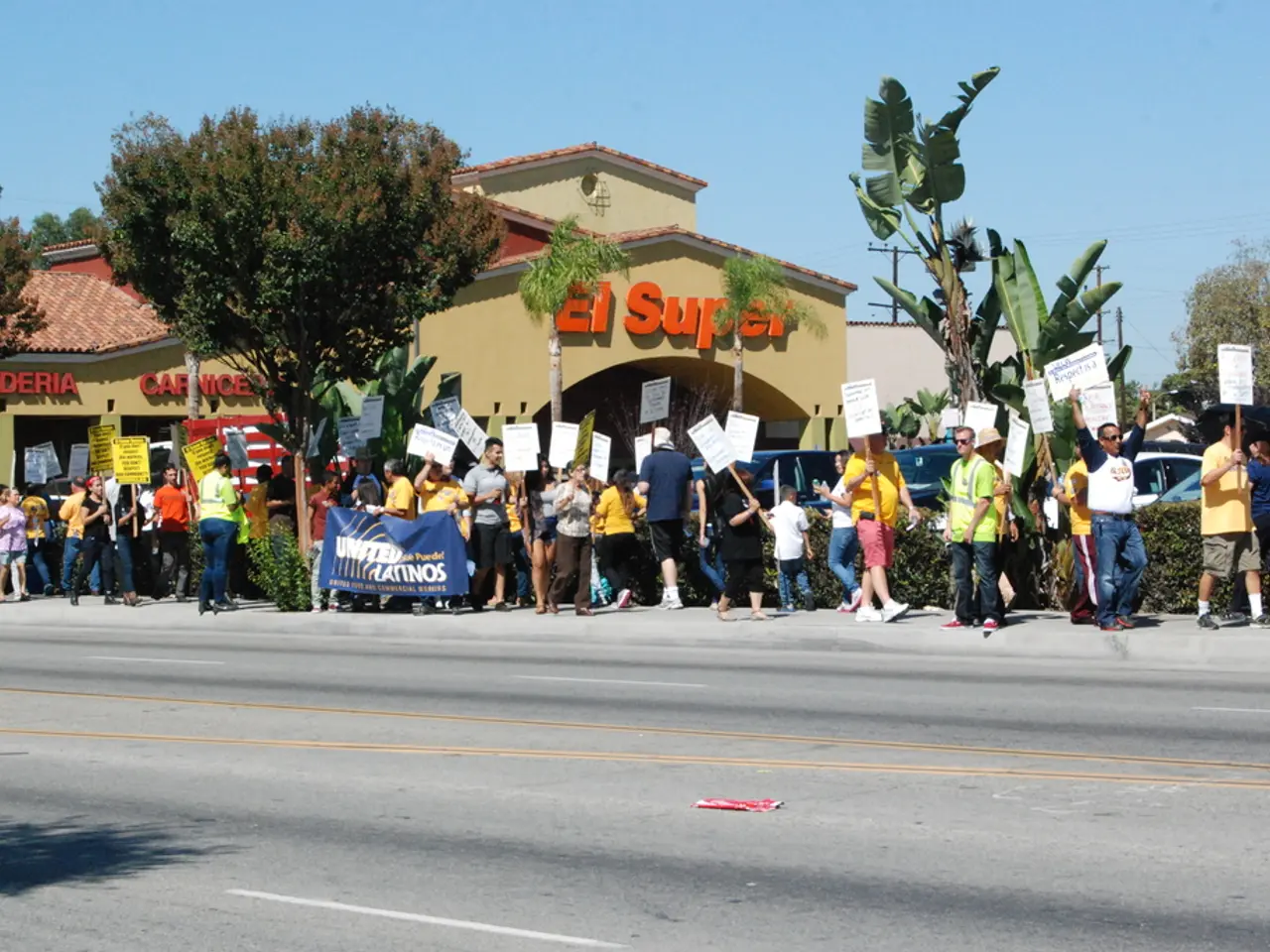Diplomat assigned by the United States to handle matters concerning Gaza
In the sealed coastal region of the Gaza Strip, home to approximately two million Palestinians, a deadly hunger crisis looms. The World Health Organization has issued a grim warning, and the United Nations Relief and Works Agency (UNRWA), which once provided comprehensive aid, remains largely sidelined due to conflict-related restrictions.
Recently, larger aid deliveries were brought into the Gaza Strip by truck for the first time in months. However, the method of aid delivery and the militarized environment have generated sharp criticism from human rights organizations, who label some Israeli actions at distribution sites as potential war crimes due to the lethal force used against civilians attempting to obtain food.
The Gaza Humanitarian Foundation (GHF), backed by Israel and the U.S., operates via four militarized distribution sites in Gaza, controlled by the Israeli military. Reports indicate that since its inception, over 700 Palestinians seeking food at or near GHF sites have been killed, and nearly 5,000 injured. Aid distribution within the sites has been described as chaotic and often leaves the most vulnerable without assistance.
U.S. Senators, including Tammy Baldwin, have pressed the U.S. government for answers regarding civilian deaths at GHF sites, the approval and funding mechanisms for GHF, and the foundation’s compliance with humanitarian standards. They have urged the U.S. to stop facilitating GHF and to advocate for a return to UN-led aid distribution to ensure safety and respect for humanitarian principles.
Israeli soldiers securing the area have been accused of shooting into crowds of aid seekers, a claim denied by the army. The Israeli government denies these accusations, attributing the stalled negotiations to Hamas' lack of willingness to achieve a ceasefire. The U.S., along with Qatar and Egypt, serves as a mediator between Israel and Hamas.
Notably, U.S. President Donald Trump has called for more food deliveries for the needy civilian population in the Gaza Strip and put public pressure on Israel. Trump has emphasized that Hamas bears the main responsibility for the situation in the Gaza Strip.
The U.S. State Department supports the GHF, with the U.S. contributing significant funds—$60 million allocated recently—and Israel reportedly matching $30 million to support the GHF mechanism. However, the method of aid delivery and the militarized environment have generated criticism from human rights organizations.
Before the new distribution mechanism, the UN operated around 400 distribution stations for aid goods throughout the Gaza Strip. The GHF distribution centers are internationally criticized for forcing large crowds to move through active combat zones.
As the humanitarian crisis in the Gaza Strip deepens, ethical and legal questions surrounding the GHF's aid distribution practices continue to mount, with growing pressure on the U.S. administration to reconsider its support and push for UN-led humanitarian efforts to ensure effective and safe aid delivery.
- The ongoing humanitarian crisis in the Gaza Strip, exacerbated by the militarized environment and controversial aid distribution practices, has sparked concerns and discussions in the realm of health, politics, and crime-and-justice, as well as general-news media.
- The ethical and legal questions surrounding the GHF's aid distribution practices have led U.S. Senators, including Tammy Baldwin, to question the compliance of the GHF with humanitarian standards, a matter of great importance for the health and wellbeing of the people in the Gaza Strip.








